As you know already, on 5th of March we will be having a conference on Joubert and his influences here in London. It is not by chance that Joubert is brought back to life here in the UK. He actually had a strong connection to England. Despite his misfortune under Claude Pernon, Joubert was an acclaimed designer in Lyon, and John Badger, an English waterer (moireur) established in Lyon actively praised his designs by saying that, as a waterer, Joubert’s watered-silks were the most beautiful he had ever seen in Lyon! And indeed it seems that the Badger family held Joubert in high esteem because he ended up marrying the daughter of Humphry Badger, another English moirerur. Humphry Badger was the director of Tours’s Royal Calender and his daughter and later Joubert’s wife, Anna, was born in Oxford. Anna might have met Joubert in Paris and they married in 1775. So, yes, Joubert had actually very strong family and professional connections with England!
Besides his family connections, Joubert’s specialty was the brocaded watered silks to which he devoted the longest chapter of Le Dessinateur. These exquisite silks were actually the English silk finishing expertise: a state secret! But, what are exactly watered silks? At the recently opened Europe Galleries you will be able to see a miniature suit whose cuffs and waistcoat are actually made with watered silk.
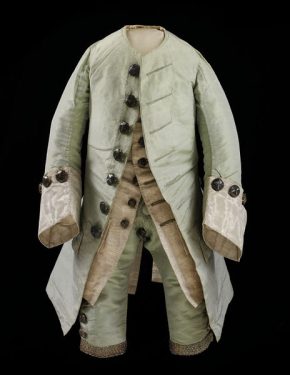
This type of fabric, whose origins are still a mystery, is characterised by a wavy effect on its surface that imitates the reflection of the sunlight onto the water.
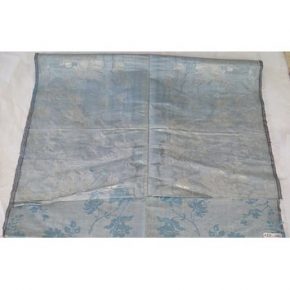
This delicate and mesmerising appearance made this fabric to be one of the most desirable ones among the elites for centuries and our dear Joubert was not unaware of that. His main concern was to produce watered silks whose flowery patterns would not be even and boring but which managed to add more visual movement to the piece. Even though we do not preserve, as far as we know, any of his delicate silks, we can still read through his words his recommendations to all designers: Be reckless, put your first ideas into paper and then don’t be scared to review and retouch them! Because ‘it is beautiful ascend up to the sky, but so it is to descend back to earth!’ (‘Il est beau de monter au Ciel. Il est beau même d’en descendre’. Nicolas Antoine Joubert de l’Hiberderie, Le Dessinateur…,p.81)
References:
Antoni Bargalló, ‘Watered textiles (I)’ Datatèxtil, 11 (2005), 5-19
Antoni Bargalló, ‘Watered textiles (II)’, Datatèxtil, 12 (2005), 47-67
For more information on the ‘Fabrications: Designing for Silk in the Eighteenth Century’ conference, including programme and booking details, please see: http://courtauld.ac.uk/event/fabrications-designing-for-silk-in-the-eighteenth-century
Post by Victoria de Lorenzo, student on RCA/V&A History of Design course, organising assistant and participant of the workshop and conference
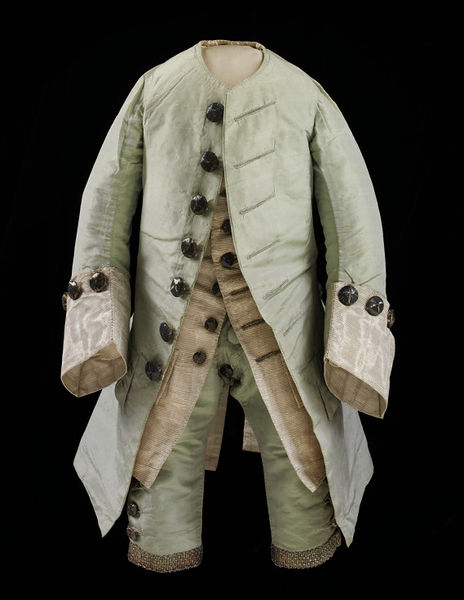
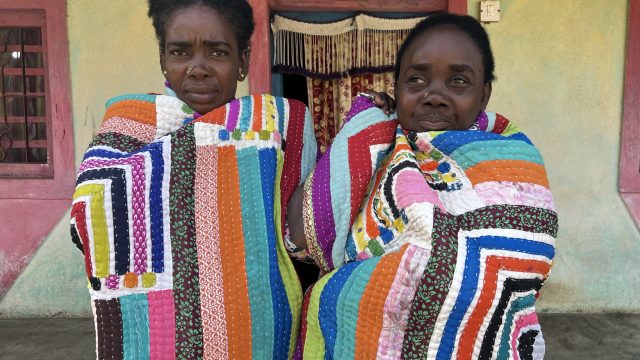
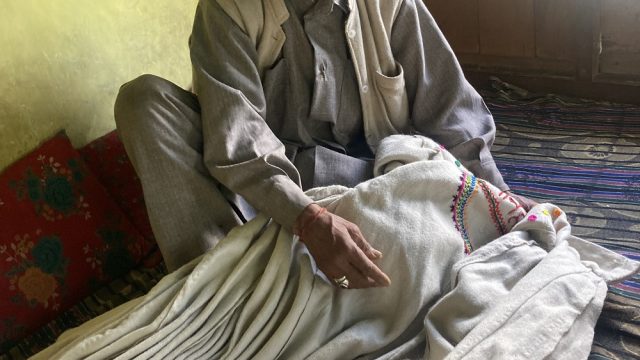
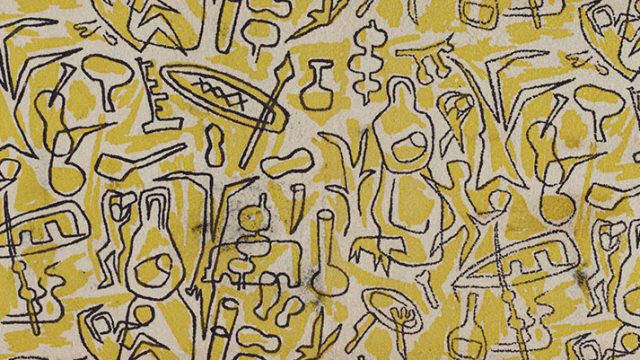
I read in ‘fashioning Fashion/European dress in detail 1700-1915’, this explanation of the technique employed to create moiré recently: “textile finishing process in which a ribbed fabric is pressed with metal rollers so that so some of the ribs are flattened while others are not and therefore reflect light differently. The rating effect is a rippled or wavelike sheen. Silks treated this way are sometimes referred to as ‘watered’ silks.” Was there a more of a secret to it than the above suggests? I am looking forward to visiting the Courtauld….
Thanks very much for your comment, Anna, and that’s such a great book you mention! The description sounds exactly right. You might have read in one of the other blogs that it was the one technique that the French weavers thought that the English weavers were better at, which I always find really interesting.